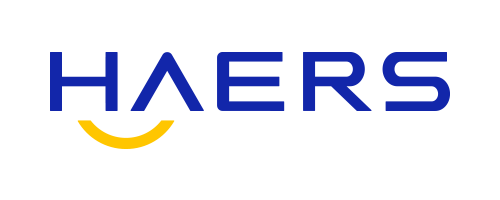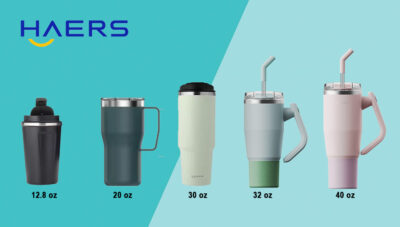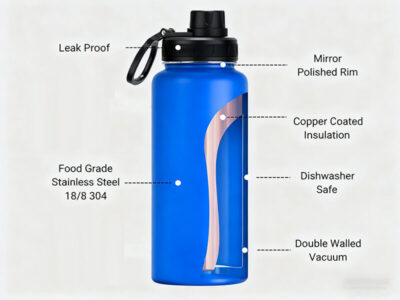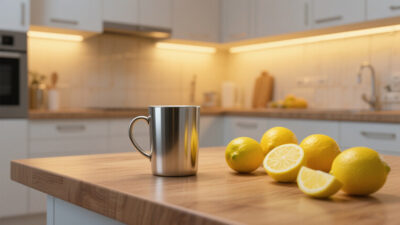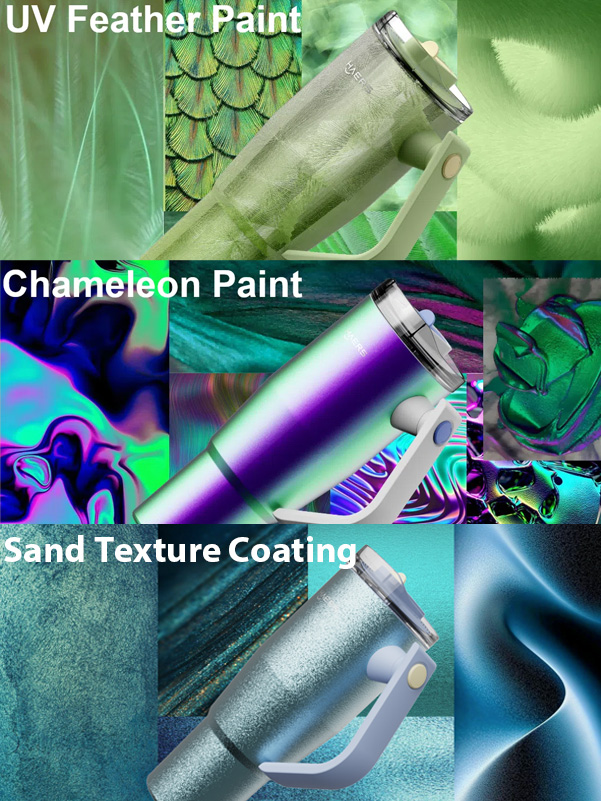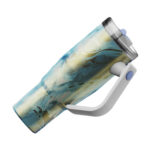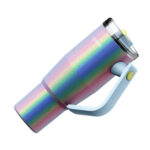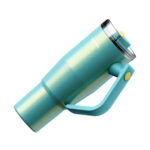Can I Make Personalized Water Bottles with a Home Laser Engraving Machine?
The trend of personalized customization is sweeping through everyday life, and personalized water bottles are taking center stage on Mother’s Day and Father’s Day. From charming DIY accessories to intricate designs etched onto cup surfaces, it’s hard not to wonder — do the users themselves really handcraft these creative pieces?
As small home laser engraving machines grow in popularity, the idea of “customizing everything at home” has become more accessible than ever. Watching these compact devices elegantly “paint” on different materials, many of us start to imagine: can we transform a plain stainless steel insulated bottle into a unique and stylish piece using a home laser engraver?
Table of Contents
ToggleFeatures of Home Laser Engraving Machines
Before deciding whether you can easily create personalized water bottles at home, it’s important to understand how home laser engraving machines work and their capabilities.
1. Basic Principles of Laser Engraving
Laser engraving is a precision marking technology that uses a focused laser beam to vaporize the surface of a material, creating a permanent design. A laser engraving machine functions as a type of laser marking system, generating high-energy beams to leave deep and lasting impressions on a variety of surfaces. The depth and clarity of these marks depend heavily on both the material being engraved and the settings of the machine.
Although home laser engraving machines seem almost magical, their fundamental characteristics greatly influence how well they perform on stainless steel insulated bottles. In general, home-use models mainly fall into several types: CO₂ lasers, fiber lasers, UV lasers, YAG lasers, and MOPA lasers. Among these, CO₂ and fiber lasers are the most common for household use.
2. CO₂ Laser Engraving Machines
CO₂ laser engraving machines operate at a wavelength of 10,600 nm. Equipped with sealed tube systems and galvanometer-controlled beams, they excel at engraving organic materials like wood, glass, ceramics, and plastics. While it’s technically possible to mark metals with a CO₂ laser, it usually requires a special marking spray or paste to bond the laser mark to the surface.
CO₂ lasers are known for their wide range of applications, high precision, and fast engraving speeds. However, they also come with notable downsides: high initial costs, significant maintenance and operational expenses, and substantial energy consumption. These factors make CO₂ lasers a sizable investment for home users.
Moreover, when it comes to engraving stainless steel insulated bottles, home-use CO₂ machines face additional challenges. Their relatively low power output means limited engraving depth, especially on harder or thicker materials. Achieving deep, clear designs is often difficult. Maintenance is another concern — CO₂ lasers require frequent cleaning of optics, complex parameter adjustments for different materials, and the management of fumes and smoke during operation, which demands a well-ventilated workspace. All these factors add complexity to home DIY projects.
3. Fiber Laser Engraving Machines
Fiber laser engraving machines typically offer power outputs between 20W and 50W and are highly regarded for their strength and versatility. Their precise, monochromatic laser beams make them excellent for detailed marking on metals and other high-density materials, making them a go-to choice for industrial-level fine marking.
Fiber lasers are praised for producing high-quality beams, delivering exceptional durability, engraving speed, and accuracy. They are ideal for marking complex surfaces and are particularly efficient for batch production in factories. However, they are less suited for engraving thick or highly reflective surfaces without professional-grade equipment.
When considering fiber lasers for home use, several limitations emerge. Although they can directly engrave metals like stainless steel, home-grade fiber machines often struggle with achieving the ultra-fine detailing and depth seen in industrial equipment. Color engraving is typically not possible either, limiting creative options. In terms of operation, fiber lasers require specialized software and careful parameter tuning, demanding a higher technical skill level from users. Some models even need auxiliary gases, like nitrogen, for optimal results, further complicating home setups.
Most consumer-level home engraving machines on the market today still rely on CO₂ laser technology, which easily marks wood, acrylic, and even glass. However, when it comes to metals — especially smooth, highly reflective stainless steel — standard CO₂ lasers often fail to make a mark without the help of special coatings. While fiber laser technology can engrave stainless steel directly with beautiful precision, the equipment is significantly more expensive, often costing thousands of dollars, which is far beyond the budget of most DIY enthusiasts.
This creates a clear dilemma: while consumers desire personalized water bottles, the technical challenges and financial barriers make achieving true home-based DIY customization much more complicated than it first appears.
Can Home Laser Engraving Machines Do the Job?
After understanding the features and limitations of home laser engraving machines, the key question remains: can these machines truly create personalized water bottles by engraving stainless steel insulated bottles?
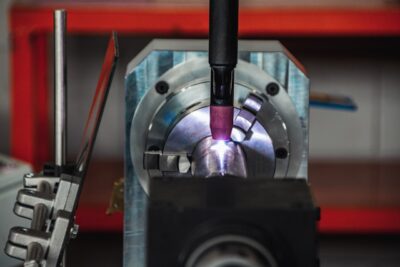
Stainless steel insulated bottles are highly favored for their durability and excellent heat retention. However, their material properties pose significant challenges for home laser engraving. Due to their smooth, highly reflective surfaces, standard home-use CO₂ laser engraving machines struggle to deliver enough energy absorption for effective marking. In most cases, a special coating must be applied to the stainless steel surface before engraving to enhance laser absorption.
Applying this coating evenly and consistently in a home environment, however, is difficult. Any variation in thickness can result in blurry, uneven patterns or even areas where the engraving fails altogether. As a result, achieving a high-quality personalized design becomes challenging, often leading to wasted materials. For brand retailers aiming for small-batch customization, this approach would not only be inefficient but also risk inconsistent product quality, falling short of customer expectations for premium personalized water bottles.
On the other hand, fiber laser engraving machines are theoretically better suited for stainless steel, as the material absorbs fiber laser energy more effectively. In practice, though, home-use fiber lasers usually have limited power output. When engraving intricate logos or complex patterns, they often fail to achieve the depth and clarity needed for professional-quality results. Additionally, fiber laser machines are expensive, making them a costly investment for ordinary consumers or small-scale brand operations.
Beyond the cost, operating fiber lasers at home requires a fair amount of technical skill. Incorrect settings can easily lead to engraving defects, adding to the difficulty of achieving satisfying results.
In short, whether using a CO₂ laser or a fiber laser, home laser engraving machines have clear limitations when it comes to customizing stainless steel insulated bottles. For individual consumers, it is challenging to achieve precise and satisfying DIY customization. For brand retailers — especially those with small to medium volume needs — home equipment falls short in terms of efficiency, consistency, and professional quality, making it an unreliable choice for creating high-standard personalized water bottles.
How to Properly Engrave Stainless Steel Insulated Bottles?
1. Choosing the Right Bottle Material
To achieve a perfect engraving on a stainless steel insulated bottle, the first step is selecting the right material. Among all options, 304 stainless steel stands out as the ideal partner for laser engraving. As a widely used food-grade stainless steel, 304 not only offers outstanding corrosion resistance but also features a dense molecular structure that works harmoniously with laser energy.
When laser beams interact with 304 stainless steel, the material can absorb heat stably, allowing for precise surface oxidation or color modification without deforming the bottle. This ensures that even the finest English letters or gradient patterns remain sharp and delicate after engraving. Thanks to this balance of strength and flexibility, bottles made from 304 stainless steel maintain both a highly personalized appearance and their core insulation performance, making them a perfect choice for personalized water bottles that combine creativity and functionality.
Recently, Tritan material has emerged as another intriguing option. Known for its glass-like transparency and exceptional durability, Tritan responds particularly well to CO₂ laser engraving, allowing clear and crisp markings without the need for chemical coatings. However, being a type of plastic, Tritan has a lower melting point and weaker thermal conductivity. Without precise control, laser engraving may cause surface cracking, burrs, or irreversible color shifts. Therefore, it’s critical to consult with product development teams beforehand to fine-tune laser parameters such as power and speed when working with Tritan.
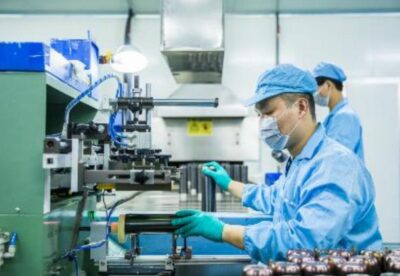
For brand retailers, material selection is crucial. Choosing the wrong material could lead to high defect rates during mass customization and damage brand reputation. Understanding the properties of different materials from the outset ensures that creative ideas are brought to life successfully rather than ending up in costly failures.
2. Choosing the Right Surface Finish
The surface finish of a bottle is just as critical as the material itself when it comes to engraving compatibility, and often more subtle than it appears.
Powder coating, for instance, gives bottles a matte texture and provides an ideal base for color-contrast laser designs. However, thick coatings can trap the laser energy like quicksand, causing only surface carbonization without penetrating to the metal underneath. This leads to patterns that look like cheap stickers rather than professional engravings. Careful control of laser power is essential — too high, and the coating burns excessively; too low, and the pattern appears blurry or incomplete. Adjusting parameters based on coating thickness and color ensures a clean removal of the coating without damaging the underlying structure.
Matte finishes, achieved through physical treatments, offer a surface that diffuses light and can be used to create striking contrasts between engraved shiny areas and the surrounding matte texture. However, engraving with excessive power can leave unwanted dents or ruin the refined surface. Proper laser tuning ensures that designs remain crisp and sharp without compromising the matte sophistication — an essential consideration for premium personalized water bottles.
Heat transfer printing is another technique that seems perfectly matched with laser engraving, but it hides challenges as well. When exposed to heat, transfer films may curl or carbonize. Successful engraving on heat-transferred surfaces depends on balancing the laser energy carefully: insufficient power leaves the transfer layer intact, dulling the design, while excessive energy can cause separation or peeling. Prior testing of the transfer layer’s thickness and temperature resistance is critical to ensure long-lasting, flawless results.
In short, choosing the right surface treatment — and understanding its compatibility with laser processes — is fundamental to achieving stable, high-quality engraving results. Whether it’s powder-coated, matte, or heat-transferred finishes, standardizing operations and pre-testing ensures that creative designs are faithfully and consistently reproduced.
3. Choosing Haers’ ODM Solution
“Either invest heavily in professional manufacturing or struggle with DIY methods” — this is the common dilemma many brand retailers face. Fortunately, Haers offers a third solution: let the professionals handle it.
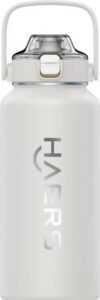
If you are a brand retailer aiming to enhance your competitiveness through personalized engraving, handing your designs to the Haers team means choosing a comprehensive, worry-free customization process. From the initial artwork transformation, Haers’ industrial designers and engineers work hand-in-hand to optimize engraving lines, depth parameters, and adapt designs based on material and surface treatment characteristics, ensuring that every detail is perfectly recreated.
What’s more, before products are shipped, Haers implements strict quality control:
- Visual inspections for pattern integrity,
- Wear-resistance tests for coating durability,
- Thermal performance retests to guarantee the bottle’s core functionality.
Each customized cup becomes a “living business card” for your brand — a real showcase of quality and design excellence.
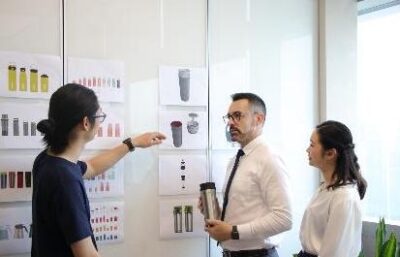
For smaller brands or creative entrepreneurs, Haers’ blank bottle collection offers the perfect canvas for innovation. From the start, these bottles are selected and processed for optimal engraving performance:
- 304 stainless steel sheets ensure consistent laser conduction,
- Tritan bottles undergo pre-treatment to minimize cracking risks during engraving.
- Matte, powder-coated, or heat-transferred surfaces are all tested for laser compatibility.
Even first-time engravers can confidently unleash their creativity thanks to Haers’ carefully prepared, engraving-friendly products, transforming what could be a risky challenge into an enjoyable, successful experience.
When a customer picks up a personalized insulated bottle, they care about three things:
- Is the design clear and beautiful?
- Is the bottle sturdy and reliable?
- Does the product carry a lasting sense of personal connection?
At Haers, ensuring these qualities is our mission. From material R&D to process optimization, we solve not only the “how to engrave” problem but also deliver the confidence that every personalized water bottle will stand the test of time, making each creation not a gamble but a guaranteed success.
How to Choose When It Comes to Large-Scale Laser Engraving?
When brand retailers face the need for large-volume laser engraving, how should they choose between “DIY experimentation” and “professional collaboration”? Behind this decision lies a complex balancing act between efficiency, quality, and cost. While the DIY model may seem flexible, it often conceals hidden risks. Any oversight in the process can be magnified during mass production, ultimately impacting both product quality and delivery timelines.
1. Risks of DIY Laser Engraving
(1) Positioning Errors
Positioning deviations that may be tolerable in small-scale customizations become serious liabilities in batch production. Home-use laser engravers typically rely on manual alignment without automatic calibration systems. Aligning stainless steel tumblers purely by eye inevitably leads to millimeter-level inaccuracies. A slight misalignment on a single tumbler might go unnoticed, but in mass production, these errors accumulate, leading to end-consumers questioning not just the product but the brand’s professionalism.
(2) Engraving Precision Issues
Home-use machines often have limited laser head stability and insufficient power control precision. When tasked with engraving complex logos or fine lines, they frequently struggle—resulting in jagged edges, broken lines, and a rough, unfinished appearance. Inconsistent power output can even cause localized burns, leaving unsightly, irreparable marks on the tumbler surface.
(3) Damage to the Insulation Layer
The insulation performance of stainless steel tumblers depends on a vacuum layer or an insulating coating. Home devices lack the depth control necessary to protect these structures. When laser intensity is improperly managed, it may penetrate the outer metal shell and damage the internal insulation——creating hidden defects that are hard to detect during production. Once in the hands of consumers, a tumbler that “loses its insulation” quickly erodes trust in the brand, causing reputational damage far greater than the cost of product replacement.
(4) High Defect Rate and Low Efficiency
Home laser engravers are highly inefficient, typically processing only 10–15 tumblers per hour under ideal conditions. Frequent manual adjustments and positioning take even more time, resulting in actual output far below expectations. Worse yet, without experience in process adaptation, defect rates can soar—up to 2–3 defective units per 10 pieces engraved. Combined with additional labor for tuning and maintenance, lead times are severely delayed, and material costs spike due to wastage. When handling large orders, DIY attempts often result in losses rather than savings.
2. Turning to Professional Suppliers
The issues encountered in DIY engraving fundamentally highlight the gap between amateur operations and industrial-grade quality control. They reflect the mismatch between large-scale production demands and the limitations of small-scale equipment and non-specialized techniques. Though laser engraving may seem simple, at an industrial level, it involves a complex coordination of materials science, thermodynamics, and precision engineering.
For brand retailers, the goal of large-batch customization is simple: “consistently deliver value.” Every tumbler should not only embody the brand‘s image but also maintain functional reliability and cost efficiency. Haers’ ODM (Original Design Manufacturing) services are designed to address these challenges-turning high-risk personalization into a repeatable, quality-assured solution. Mass production is not a graveyard for creative ideas, but a powerful amplifier for brand competitiveness.

Haers offers a comprehensive ODM solution:
-
Industrial-grade laser equipment combined with a professional process ensures consistently high engraving precision.
-
Automated positioning systems accommodate different tumbler shapes, eliminating manual errors.
-
Real-time power monitoring guarantees consistency over long production runs.
-
Expert engineering support optimizes laser paths and energy settings based on tumbler structure and material properties, fundamentally protecting insulation performance.
Beyond engraving, Haers also provides design optimization advice:
-
Adjusting logo proportions to fit the curved surface of the tumbler perfectly.
-
Recommending process combinations tailored to different usage scenarios—for example, using deeper engravings to enhance durability for outdoor tumblers, or creating fine matte and glossy contrasts to elevate the aesthetic appeal of business gifts.
With full-process control from blueprint to finished product, brand retailers can respond rapidly to the market’s growing demand for personalization—— without sacrificing quality or profitability.
This professional ODM model is particularly suited to large-scale scenarios such as gifts and promotional items. Brand owners can focus on design and marketing, while manufacturing is entrusted to a partner with mature processes and reliable capacity. This not only boosts efficiency but also significantly mitigates operational risks.
Final Thoughts
Choosing a home-use laser engraving machine means enjoying the freedom of creative exploration, while partnering with a professional manufacturer represents the maturity needed for commercial success. Both paths have their value, but they serve very different needs. Home engraving equipment is perfect for small-scale, personalized projects, offering unique customization for individuals or small batches of gifts. However, when it comes to large-scale production, issues like high costs, low efficiency, and inconsistent quality make DIY solutions impractical.
When your needs evolve from small creative runs to stable, high-volume deliveries, partnering with a professional tumbler manufacturer like us is the optimal choice. With expertise in material compatibility, industrial-grade precision, and large-scale production capabilities, Haers ensures both the artistic quality and the operational efficiency your brand demands. This professional collaboration turns personalized engraving from a risky venture into a reliable, scalable solution-making large-scale customization a true competitive advantage in the gift and retail industry.

